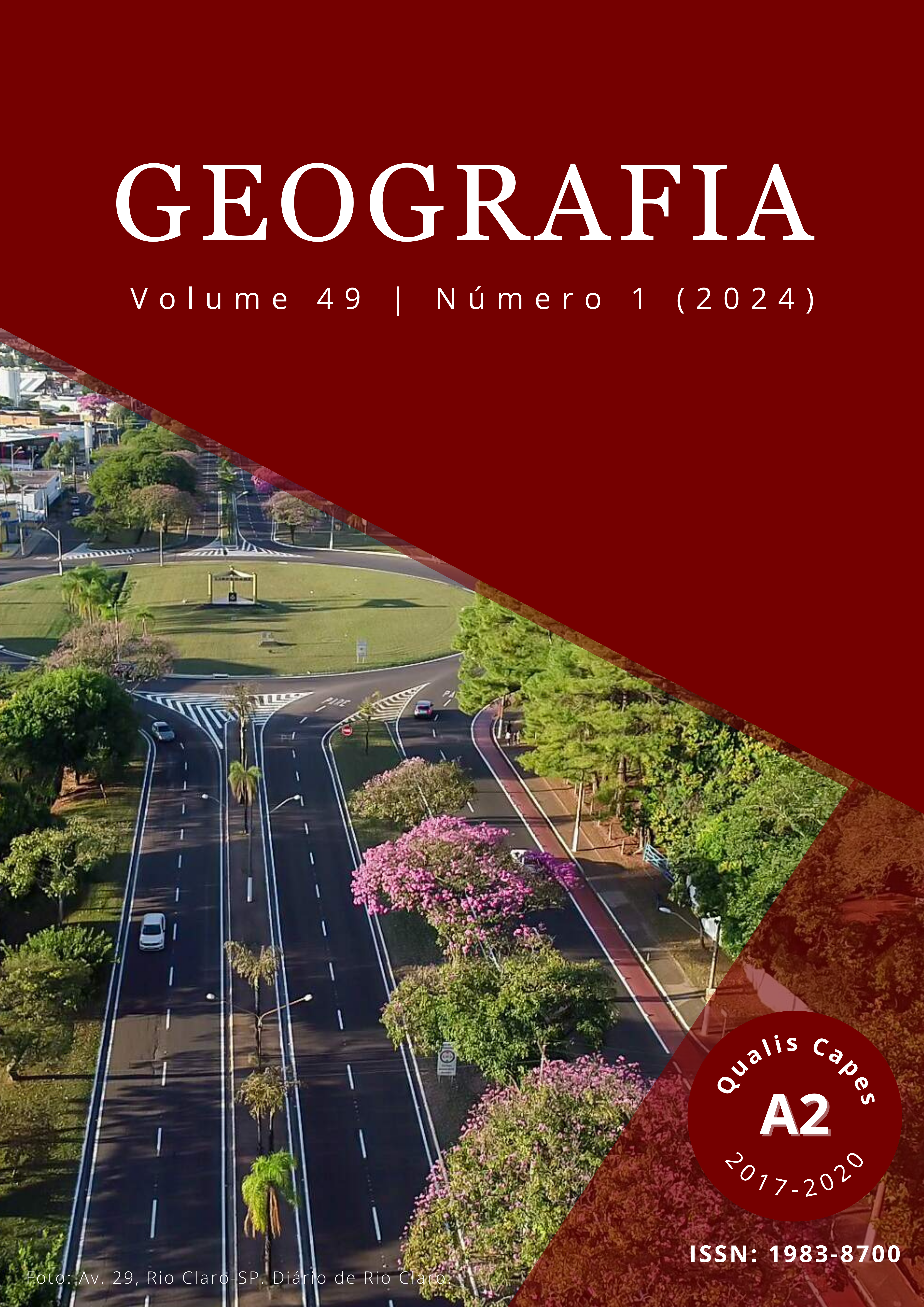Classification of the climatic units of the Pedra Branca Massif - Rio de Janeiro, RJ
DOI:
https://doi.org/10.5016/geografia.v49i1.18337Abstract
The importance of climate in the organization of society is currently under debate, especially in relation to climate change in the 21st century. Therefore, understanding the particularities of different types of climate becomes relevant for planning and mitigation actions. Hence, this paper presents the classification of climate units, according to Novais (2019), applied to the Pedra Branca Massif, located in the west zone of the municipality of Rio de Janeiro - RJ, considered an important forest fragment in an urban area. The delimitation of the different types of climate found in the massif is correlated with global solar radiation and surface temperature data. The research included the stages of mapping global solar radiation and surface temperature, and then the delimitation of the units according to the hierarchies established by Novais (2019). The results showed differences in temperature and humidity on the eastern, western and northern slopes of the massif. The western and northern slopes presented drier climates, while the eastern slope was dominated by wetter climates.
Downloads
Published
Issue
Section
License
Copyright (c) 2024 GEOGRAFIA

This work is licensed under a Creative Commons Attribution 4.0 International License.
The authors maintain the copyright and grant GEOGRAFIA the right of first publication, with the articles simultaneously licensed under the Creative Commons BY 4.0 License, which allows sharing and adapting the articles for any purpose, as long as appropriate credits and provisions of image rights, privacy or moral rights. Other legal attributions can be accessed at: https://creativecommons.org/licenses/by/4.0/legalcode.en.
Geography, Rio Claro, SP, Brazil - eISSN 1983-8700 is licensed under the Creative Commons BY 4.0 License.





